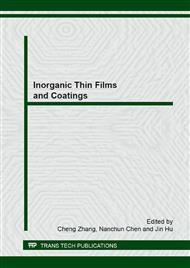p.193
p.197
p.201
p.205
p.209
p.214
p.220
p.224
p.229
Study on Properties of Thick-Film Front Silver Electrodes for Silicon Solar Cells
Abstract:
The front electrode is usually made by the screen printing thick-film silver pastes and the high-temperature firing process in industrial production of silicon solar cells. This paper analyzed the ohmic contact mechanism of thick-film front silver electrodes and studied the microstructure of Ag-Si interface by SEM. The paste samples, used to form front silver electrodes of silicon solar cells, were prepared. Thick-film silver electrodes were printed on silicon wafers with different sheet resistances, and the relationships between the sheet resistances and the contact properties were investigated by changing the firing temperature. By adding right amount of phosphorus compounds to the silver paste, the effects of the donor-doping (N-doping) concentrations on the series resistance of cells were studied. The experimental results show that firing temperature is critical to the Ag-Si ohmic contact, particularly when the silver pastes are designed for the wafers with high sheet resistance and the right amount of N-doping addition in the paste may decrease the series resistances of solar cells.
Info:
Periodical:
Pages:
209-213
Citation:
Online since:
January 2013
Authors:
Price:
Сopyright:
© 2013 Trans Tech Publications Ltd. All Rights Reserved
Share:
Citation:



